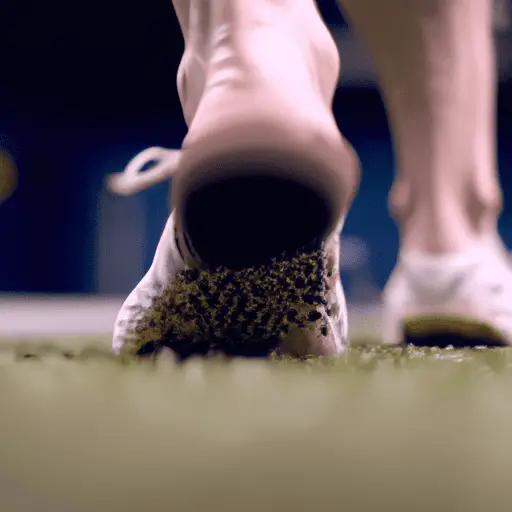-
Table of Contents
- The Importance of Being Aware of Athlete’s Foot
- Key Takeaways
- Introduction: Unmasking Athlete’s Foot
- The Causes and Symptoms of Athlete’s Foot
- Treatment and Prevention of Athlete’s Foot
- The Risks of Ignoring Athlete’s Foot
- FAQ Section
- 1. Can athlete’s foot be cured?
- 2. Can athlete’s foot spread to other parts of the body?
- 3. Can I get athlete’s foot even if I’m not an athlete?
- 4. How can I prevent athlete’s foot?
- 5. Can athlete’s foot cause serious complications?
- Conclusion: The Significance of Awareness
- Key Takeaways Revisited
The Importance of Being Aware of Athlete’s Foot

[youtubomatic_search]
Key Takeaways
- Athlete’s foot is a common fungal infection that affects millions worldwide.
- Understanding the causes, symptoms, and treatment options for athlete’s foot is crucial for prevention and management.
- Untreated athlete’s foot can lead to severe complications, including bacterial infections and cellulitis.
- Proper foot hygiene and care can significantly reduce the risk of athlete’s foot.
- Early detection and treatment of athlete’s foot can prevent its spread to other parts of the body and to other people.
Introduction: Unmasking Athlete’s Foot
Athlete’s foot, medically known as tinea pedis, is a common fungal infection that affects the skin on the feet. It is estimated that up to 15% of the population suffers from this condition at any given time (Source: American Podiatric Medical Association). Despite its prevalence, many people remain unaware of the importance of understanding and managing this condition. This article aims to shed light on the significance of being aware of athlete’s foot, its causes, symptoms, treatment options, and preventive measures.
The Causes and Symptoms of Athlete’s Foot
Athlete’s foot is caused by a group of fungi called dermatophytes, which thrive in warm, moist environments. These fungi are commonly found in public places like swimming pools, showers, and locker rooms. When a person with athlete’s foot walks barefoot in these areas, the fungi can be left behind and picked up by others.
The most common symptoms of athlete’s foot include itching, burning, and stinging sensations between the toes or on the soles of the feet. The skin may also become red, dry, scaly, or cracked. In severe cases, blisters or ulcers may form.
Treatment and Prevention of Athlete’s Foot
Treatment for athlete’s foot typically involves antifungal medications, which can be applied topically or taken orally. In severe cases, a healthcare provider may prescribe stronger antifungal drugs or antibiotics if a secondary bacterial infection has occurred.
Prevention of athlete’s foot primarily involves proper foot hygiene. This includes washing the feet daily with soap and water, thoroughly drying the feet, especially between the toes, and wearing clean, dry socks and shoes. It is also advisable to avoid walking barefoot in public places and to use antifungal powders or sprays if you are at a higher risk of infection.
The Risks of Ignoring Athlete’s Foot
Ignoring athlete’s foot can lead to severe complications. The infection can spread to other parts of the body, including the hands and groin. If left untreated, it can also lead to a more serious bacterial infection called cellulitis, which can be potentially life-threatening if not treated promptly.
Moreover, athlete’s foot is highly contagious and can easily spread to other people. Therefore, being aware of this condition and taking appropriate measures to treat and prevent it is not only important for personal health but also for public health.
FAQ Section
1. Can athlete’s foot be cured?
Yes, athlete’s foot can be effectively treated with antifungal medications. However, it can recur if preventive measures are not followed.
2. Can athlete’s foot spread to other parts of the body?
Yes, the fungi that cause athlete’s foot can spread to other parts of the body, including the hands and groin. This usually occurs through scratching or touching the infected area and then touching another part of the body.
3. Can I get athlete’s foot even if I’m not an athlete?
Yes, despite its name, athlete’s foot can affect anyone, not just athletes. The name comes from the fact that the condition is common among athletes, who often use communal showers and locker rooms where the fungi thrive.
4. How can I prevent athlete’s foot?
Preventing athlete’s foot involves maintaining good foot hygiene, avoiding walking barefoot in public places, and using antifungal powders or sprays if you are at a higher risk of infection.
5. Can athlete’s foot cause serious complications?
Yes, if left untreated, athlete’s foot can lead to serious complications, including bacterial infections and cellulitis, which can be potentially life-threatening.
Conclusion: The Significance of Awareness
Being aware of athlete’s foot is crucial for its prevention and management. Understanding the causes, symptoms, and treatment options for this condition can help reduce its prevalence and prevent its spread. Moreover, early detection and treatment can prevent serious complications and contribute to overall foot health. Therefore, it is essential to maintain good foot hygiene, seek medical attention if symptoms occur, and follow preventive measures to keep this common but potentially serious condition at bay.
Key Takeaways Revisited
- Athlete’s foot is a common but potentially serious condition that requires awareness and understanding.
- Proper foot hygiene and care can significantly reduce the risk of athlete’s foot.
- Early detection and treatment can prevent the spread of the infection and serious complications.
- Being aware of athlete’s foot is not only important for personal health but also for public health.
[youtubomatic_search]

Leave a Reply